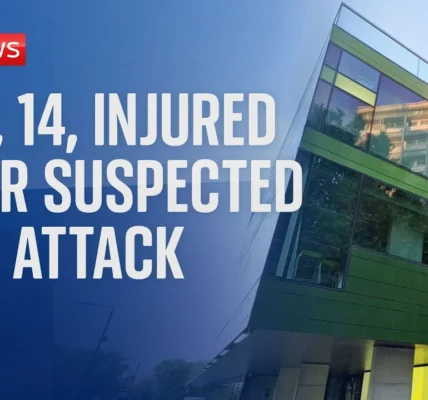Major Fire Incident in East London: An In-Depth Report

This article provides a detailed overview of the recent fire incident in East London, covering emergency responses, community reactions, and the implications for building safety and cladding issues.
Introduction
In a significant emergency response, hundreds of firefighters and numerous fire engines have been deployed to tackle a major fire incident in East London. The event has raised alarms reminiscent of past tragedies, such as the Grenfell Tower fire, prompting urgent discussions about building safety and fire prevention measures. This article delves into the details surrounding the incident, the response from emergency services, and community concerns about safety and cladding issues.
Overview of the Incident
The fire broke out early in the morning at a residential building in Dagamm, East London. The London Fire Brigade reported that 225 firefighters, supported by 40 fire engines, were on the scene. To grasp the scale of this operation, it’s essential to note that the same number of engines was initially dispatched during the Grenfell Tower tragedy, highlighting the seriousness of the situation.
Emergency Response
The swift action taken by the London Fire Brigade has been commendable. A major search and rescue operation was launched immediately, with crews working tirelessly to ensure the safety of residents. While a full evacuation was reportedly completed, there remains uncertainty regarding whether all individuals were able to escape safely.
Casualties and Medical Response
According to the London Ambulance Service, four individuals were treated at the scene, with two requiring hospitalization. This quick medical response is vital in minimizing the potential consequences of such emergency situations.
Community Concerns and Building Safety
As the situation continues to develop, concerns from the community regarding building safety and the use of dangerous cladding have resurfaced. The building involved in the fire was wrapped in scaffolding intended for the removal of hazardous cladding, a direct response to previous incidents across the country.
The Cladding Issue
The cladding situation has been a significant point of contention in the UK, especially following the Grenfell Tower fire. Residents’ associations have actively campaigned for the removal of dangerous materials from buildings, and the presence of scaffolding at the site indicates that progress was being made. However, the timing of the fire raises questions about the adequacy of safety measures in place during the cladding replacement process.
Public Reactions
- Residents expressed relief that the fire was not as catastrophic as Grenfell.
- There is a palpable sense of anxiety regarding building safety among locals.
- Many are calling for a thorough investigation into the cause of the fire.
Eyewitness Accounts
Personal accounts from residents and families affected by the fire provide valuable insights into the chaos and urgency of the situation. One father, whose daughter was having a sleepover in the building, shared his experience of the early morning evacuation.
Evacuation Experience
He described a sudden onset of smoke around 3:00 AM, prompting immediate action to evacuate his daughter and a 6-month-old infant. Their swift response ensured their safety as they exited the building just as fire engines began arriving. This highlights the importance of preparedness and quick thinking in emergency situations.
Current Situation and Atmosphere
As of the latest reports, the fire appears to be under control, with emergency services managing the situation more effectively than earlier in the morning. Observers noted a less frantic atmosphere among firefighters, a sign that the immediate threat may have diminished.
Emergency Services Response
Firefighters were seen with their protective gear off, indicating a shift in the urgency of their operations. However, the concerns of local residents remain palpable, with many still gathered around, seeking information about the incident and its aftermath.
Conclusion
The fire incident in East London serves as a stark reminder of the ongoing challenges related to building safety and the potential dangers posed by flammable cladding materials. While the situation has stabilized, the community’s concerns about safety and the adequacy of emergency responses continue to resonate. As investigations proceed, it is crucial for residents and authorities to work collaboratively to ensure that lessons are learned and that safety measures are enhanced to prevent future tragedies. We encourage readers to stay informed and engaged with local safety initiatives.
“`




